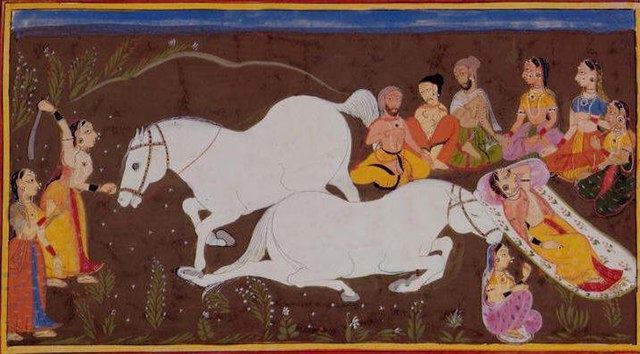The Ashvamedha was a horse sacrifice ritual followed by the Śrauta tradition of Vedic religion. It was used by ancient Indian kings to prove their imperial sovereignty: a horse accompanied by the king's warriors would be released to wander for a year. In the territory traversed by the horse, any rival could dispute the king's authority by challenging the warriors accompanying it. After one year, if no enemy had managed to kill or capture the horse, the animal would be guided back to the king's capital. It would be then sacrificed, and the king would be declared as an undisputed sovereign.
Ashvamedha yajna of Yudhisthira
A 19th-century painting, depicting the preparation of an army to follow the sacrificial horse. Probably from an illustration to Lakshmisa's Jaimini Bharata
Queen Kaushalya performing the Ashvamedha ritual; illustration to the Ramayana
Samudragupta, Ashvamedha horse
Horse sacrifice is the ritual killing and offering of a horse, usually as part of a religious or cultural ritual. Horse sacrifices were common throughout Eurasia with the domestication of the horse and continuing up until the spread of Abrahamic religions, or in some places like Mongolia, of Buddhism. The practice is rarely observed in some cultures even today.
Skull of a horse sacrificed by multiple sword blows during the Iron Age (4-500 AD), found in Nydam Engmose, Denmark, at the Zoological Museum, Copenhagen
A 19th-century painting, depicting the preparation of army to follow the Ashvamedha sacrificial horse. Probably from a picture story depicting Lakshmisa's Jaimini Bharata
Reconstruction of a sacrificed horse and two dogs (570-600 AD) from Povegliano Veronese
Illustration of the Irish horse sacrifice taken from Topographia Hibernica, c. 1220







